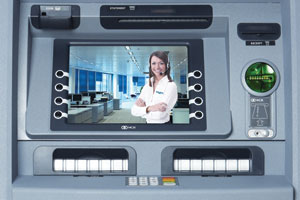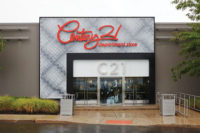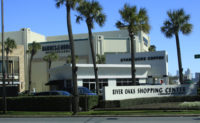For Pat Cooper, location makes a difference. Mobility is the key for Kevin Mykle. Andrew Roberts needed to overcome an old, cumbersome and unreliable system that produced very poor image quality.
Strategies and technology solutions vary among banking, finance and retail enterprise security leaders. But there is a lot of commonality, too.
Patricia (Pat) Cooper, senior vice president bank security with First Federal Bank of the Midwest in Ohio, adjusts her use of technology based on retail branch locations. “Sometimes we need to base our security on differences” among branches, with those in urban areas, or near higher crime areas or close to high traffic intersections needing a higher level of security.
When it comes to security video, “quality video is important,” she says. In drive-thrus, Cooper also seeks quality images that can capture vehicle license plate information, when possible. The bank security executive has a close, ongoing relationship with her integrator, Diebold, which regularly assesses “my needs and makes suggestions” regarding improvements, changes and upgrades. “In our operations center and at some branches, we also have card access controls.”
The role of integrators, who understand bank and retail needs, is an important element in many operations.
Kevin Mykle, manager of Stampede Tack & Western Wear, Cloverdale, British Columbia, relies on Panarama Technologies for his security needs ever since the store first installed a system years ago that backed up surveillance video on VHS tapes. As knowledge in the industry has evolved, the security integrator has been meticulous in helping the store owners stay up to speed with all the advancements of technology.
Myhle’s store offers a wide variety of boots and apparel ranging from traditional cowboy wear to more trendy designs, and to keep pace with the growing popularity of motorcycles, the company has added leather gear.
Remote Monitoring a Retail Key
“We have boots that cost as much as $900 and saddles that are worth $3,500, so we want to make sure those assets are protected.” Mykle says that although his staff members are extremely customer-service oriented and pride themselves on their ability to provide individual attention to shoppers, it’s not possible for them to be everywhere at once, so the store suffers its share of shoplifting. “We like to keep our eyes open, to guard the merchandise against occurrences that might happen,” he says. “We wanted a video surveillance solution throughout the store to help us achieve that.”
In addition to housing the retail space, the building also incorporates a huge warehouse, which could present a prime opportunity for major theft. Because the store is located in a historically low crime area, during most of its history it has remained free from burglaries; yet in the past year the site experienced its first break-in. From that incident, store owners discovered it was crucial to share video evidence with the police to aid in their investigation and increase the chances of recovering stolen merchandise, and they asked Panarama for help.
In addition to adding new cameras throughout the store, the integrator introduced Mykle and his staff to Honeywell’s H.264 digital video recorder with Web-enabled remote viewing software that enables the manager to check in on things from anywhere using his computer, his cell phone, or his Apple iTouch. Mykle simply clicks on the icon to instantly see live video feed from all 16 cameras in the store.
From the user’s standpoint, the Remote-View app has enhanced the value of the security system and increased the effectiveness of employees. “If an alarm goes off at two in the morning, it’s nice to have that quick little look from home and see exactly what’s happening in real-time,” comments Mykle. And when it comes to using the cameras on a daily basis for more than just security purposes, he said it seems the uses are endless. “We’ve had situations at the counters where a customer will have a problem and we’re able to go back and find the video and get the issue resolved quickly. It’s really quick and easy to go back on the DVR and look it up.”
Awareness of security is important both for staff and customers. “Our on-site cameras are highly visible,” observes Mykle. “We have a large area to cover so it is essential to have all security solutions tied together as well as pass along information to law enforcement.” The retailer sees value in his ability to remotely access video and other security data. “Just two clicks and I am there.”
Covering Regulatory Needs
Getting back to bank and financial institution security, emphasis is less on cell phone mobility and more on meeting regulatory needs including security video of tellers and lobbies. At the same time, banks, like other businesses, mostly use analog cameras among their legacy security systems and, unlike some others, are moving more cautiously to digital video.
But there are a growing number of exceptions. Take CMC Markets, for example.
Established in 1989 with only a $15,000 investment, CMC Markets, from the start, embraced new technology. It was the first company in the United Kingdom to offer a Web-based derivatives trading platform to the retail market.
“We had an analog-based surveillance system at our previous headquarters – an old, cumbersome and unreliable system that produced very poor image quality,” explains Roberts, the firm’s group facilities manager. Keen to transition to high definition IP-based surveillance, Roberts wanted greater flexibility, better coverage and ease of use. “We were confident from the outset that an Avigilon HD surveillance system could help us achieve regulatory compliance and greatly improve our ability to secure our site,” says Roberts. He adds that the platform is a much more useful system from the end user perspective than the traditional analog-based system. “We actually want to use [it] because we know it will provide us with good, clear images that we can easily search to find the detail we need much faster than before.”
CMC Markets required a surveillance solution that could effectively monitor key areas throughout the main office to help limit access to critical customer information, but it also needed a system that is in itself highly secure. “We simply cannot have any open access points on the network that might jeopardize our data integrity,” explains Roberts.
In addition to security video, such businesses employ card access controls and high security identification.
According to Jeremy Hyatt of HID Global, finance and banking institutions, along with insurance and retail companies, have an increasingly critical need to protect the physical integrity of their personal and corporate information, and have achieved this with the latest contactless smart card solutions.
Credential Flexibility
“These institutions and companies will soon be migrating to a new generation of secure identity including solutions delivered on smartphones and other mobile platforms. Getting to this next phase requires a seamless, end-to-end ecosystem of products and technologies for mobile keys and credentials, including the smartphones that carry them, the readers that authenticate them, the locks they open, and the services for issuing them,” Hyatt adds.
For example, Banco do Nordeste do Brasil, a state financial entity, is a catalyzing agent for sustainable development and for fostering economic development of the northeast region of Brazil. Wanting to protect itself from growing security threats, BNB in 2008 reinforced its control system for physical access to its administrative offices in Fortaleza, Ceará. The bank chose contactless smart cards and readers to provide the high level security it needed for controlling access to strategic points through its offices. BNB started with the legal and finance departments, the DPC and the security room, prior to deploying its solution across more than 50 controlled points.
Integrator Interactive Tecnologia Ltda. deployed HID keypad and biometric readers to meet the levels of security required in each area. These devices, in conjunction with 2Kbit smart cards and software, replaced a proximity system. Additionally, BNB decided to take advantage of an exclusive card format. The credentials are programmed by HID, with a unique identification number, which is tracked during the entire production process in order to prevent duplications.
According to José Boileau, executive manager of corporate security for BNB, the cards are used intensely, whether as a part of the electronic access control system to controlled environments or as a photo identification credential of the employees. “Previously, it was not possible to generate access reports since we did not have the precise information on who entered each area. Now we can analyze in detail access to various environments,” Boileau says.
Also, with the 2014 World Cup ahead, Banco do Nordeste will face a new challenge given its physical proximity to the platform of the games in Fortaleza: the Castelão stadium. The access control for all entrance points will be adapted to the new traffic conditions with the installation of gates and automatic turnstiles in order to offer greater security to its employees and visitors.
Smartphone Use
Beyond the Brazilian example, a next step for banks and other financial institutions is to extend physical and logical access control onto smartphones and other mobile devices with greater levels of security and convenience. These businesses are now entering a new era of digital keys and portable digital identity credentials that can be securely provisioned and safely embedded into smartphones. But deploying this new access control model requires an ecosystem of products and technologies for mobile keys and credentials such as HID Global’s Trusted Identity Platform framework, creating a secure boundary within which to deliver access control solutions on smartphones with short-range near field communications (NFC) technology. The design ensures that all endpoints, including NFC-enabled smartphones, can be validated, and the transactions between phones, readers and locks can be trusted.
Behind many retail operations are distribution facilities that also need protecting.
In one instance, Skechers USA, the footwear giant, has taken some significant steps to secure its flagship distribution facility with an IP surveillance solution. The 1.8 million-square-foot complex, which does a high volume of business, has unique security requirements because of its designation as a U.S. foreign trade zone.
“Our new facility was designed to optimize operational efficiencies of our distribution operations, and we expected the same performance from our new security and surveillance technology,” says Greg Drivas, director of loss prevention for Skechers USA. “Using victor from American Dynamics simplifies the management of our large camera network for our loss prevention and security staff.” The footwear company is using IP SpeedDome cameras among the 150-plus cameras used in the installation.
Emphasis on Innovation
“Skechers had unique needs for its new, state-of-the-art facility and we were able to meet those needs with a creative blend of innovative technology and expert design,” comments Vijay Patel of Select Systems Technology, the integrator.
It is obvious that, in this example, and especially with banking, enterprise security leaders look to their integrators for expert advice in addition to installation, service and maintenance. This is especially true as banking continues to grow and change with mergers, acquisitions and branch retail operations.
Today, there are a number of security integrators who target banks and financial institutions.
According to Jackie Grimm, vice president of security services at Diebold, “A key to success [in the banking sector] is a commitment to customers. It is important to cover the diversity of products and security services across a wide geographic area of North America. We have invested in people, process and technologies to bring solutions to customers.” And, banks and retail more generally are unique when it comes to security. Adds Marty Patnaude of American Alarm, “Not every industry is dealing with large sums of cash and is subject to robbery on a daily basis, so we work hard to understand their needs.”
But it pays if bank security and the integrator are on the same page.
“When working with a client, an important element is subject matter expertise. You have to understand this industry,” says John Nemerofsky, vice president of market solutions at Stanley Convergent Security Systems. “This is one of our fastest growing areas. The bigger banks are spending dollars to upgrade and maintain their systems. New technology and solutions are lowering their costs and our costs, too,” says Nemerofsky. One trend, according to the Stanley executive: More hosting or managing through the cloud. “There is also increased interest [by bank security] in mobile devices that connect into security systems.”
The “banking space is a unique space. It is a secure environment but you invited customers in. There also are backrooms where customers are not invited in. It’s a matter of the appropriate level of security,” says Grimm.
According to security bank officers and their integrators, the big three physical security technologies include intrusion detection, video and access controls. Beyond the threesome, Nemerofsky sees value in physical security information management for situational analysis and command and control. “You can collect security information and work on an all-in-one GUI. It also helps with video resolution and incident reporting.” There is also interest in more sophisticated credential management, that goes beyond typical card access control, says Nemerofsky.
Tighter Integration
There is a growing appetite for new technology that has a return on investment. “We are not ‘me too,’” says Bill Hemminger of Bank Design & Equipment. The important element is the ability to bring diverse systems and processes together, he adds. “We often act as a beta testing arena,” says Troy Keller, Bank Design’s director of engineering.
Software analytics is playing a greater role as integration moves through human resources to operations to access control and video, contends Hemminger. “Video storage is important for forensics. Right now we do about 50 to 50 analog to IP video.” For Keller, the key is open systems as well as appropriate application of video, for example, use of 360 degree cameras in addition to cameras aimed at teller windows.
The future? “There will be advancement of analytics, tighter integration across all the various platforms. Technology keeps evolving. There is more connectivity and a push to bring video right to tellers,” comments Hemminger. His firm has established a modified mesh network, for instance, so that law enforcement approaching a bank incident can connect into the facility’s video system.
Banks are always looking at budgets. But integrated services for security shift things from capital expense, points out Diebold’s Grimm.
A Diversity of Products, Services |
|
Banks and financial institutions boast myriad technology and service needs.
Integrated Product Solutions • Surveillance • Alarms • Safes, Vaults and Safe Deposit Boxes • Access/Door Control • Bullet-Resistive Solutions • Depositories • Fire-Resistive Document Storage Solutions • Drive-Up and Transaction Solutions • ATM Security
Enterprise Systems • Technical Service & Support • Preventative Maintenance & Break-Fix Service • Product Application Services (PAS) • Project Management
Managed Services • Monitoring • Logical Security • Security Outsourcing |
Banking by the Numbers |
|
Remember Willie Sutton’s advice? When the infamous robber was asked why he targeted banks, he said, “That’s where the money is.” Of course, Willie never said that. And, ironically, in his after-jail years, Sutton earned a nice living from the bankers, specifically with New Britain Bank and Trust of Connecticut, starring in a television commercial to promote the bank’s then-new MasterCharge credit card that boasted a cardholder photo for additional security. There are about 7,350 commercial bank and savings institutions in the United States as well as about 7,500 credit unions. Most have retail stores. There are about 99,600 bank offices. The industry continues to be impacted by mergers and acquisitions. The four largest by far are JPMorgan Chase Bank, Bank of America, Citibank and Wells Fargo Bank. With all those automated teller machines out there, you would think there are more ATMs as compared to tellers. But you would be wrong. There are about 556,000 tellers while there are 420,000 ATMs. But both have been reduced in numbers since 2008. When it comes to the Willie Sutton effect, there is not that much lost dollars from bank robberies relative to electronic and identity thefts. According to the FBI, in the third quarter 2011, the last data recorded, there were about 1,080 bank robberies with a loss of about $9.3 million dollars. About $2 million was recovered. |
Fire Alarm Retrofit in a Retail Environment |
|
There is much to gain when retail establishments update their fire protection systems, according to Richard Conner of Notifier. A fire protection system upgrade can improve areas of detection, notification, and monitoring. It reduces the risk of high maintenance costs and disruption in operations. Older, legacy systems are much more prone to incidents involving poor detection, false alarms and excessive maintenance alerts. This is especially vital for single or multi-story properties that have a large retail space and high foot traffic. Retailers should engage fire and security experts to ensure the fire alarm system has a positive impact and is not an impediment to risk and crisis management plans. Then there is that bottom line impact. More than ever, retailers are focusing on security and operating efficiency. Unfortunately, the fire alarm may not receive the attention necessary to evaluate its impact on the business’s profit & loss statement. Operating a legacy system for many years is advantageous to controlling life-cycle costs; however, investing in newer technology offers financial benefits beyond just keeping a legacy fire protection system active. A fire alarm retrofit improves areas of detection, notification and monitoring; all providing a positive contribution to a retail operation’s P&L. One aspect of the fire alarm system that warrants an update is duct smoke detection in the heating, ventilation and air conditioning system. Conventional or intelligent duct smoke detectors installed 10+ years ago are more susceptible to dust that commonly accumulates in an HVAC system than those on the market today. Without the advanced warning provided by today’s technology, this leads to an emergency condition on the fire alarm panel. Local codes may require the facility to be evacuated; therefore, creating a disruption to the business. A solution is to use the latest technology in conventional duct smoke detectors with means of notifying the loss prevention personnel when the device is reaching the point of requiring service. Another option is the use of intelligent duct smoke detectors with multiple levels of service indicators which are displayed at the system’s addressable fire alarm control panel. These warnings allow for a non-emergency visit by a qualified fire alarm technician before an emergency alarm situation occurs. |
ATMs Call for Special Security |
||
The charm of automated teller machines is their convenience and the many locations, over 420,000 in the U.S., for after-hours use. But there also is that safety factor with threats that range from robberies to card skimming. ATMs are an “important extension of the [bank’s] brand and branches,” says Terrie Ipson, manager, security services strategy and business development with Diebold. The “security technologies have evolved and become more sophisticated,” she adds. In addition to brute force attacks, there is the need to secure cards and currency from fraud. “There is card skimming and card trapping, too.” The Diebold executive points out that ATMs do not store card data, but the data does transmit. “So there is the requirement to protect that information in transit.” Biometrics also can be employed, but it is a solution often used outside the U.S. ATMs continue to evolve with the newest turning into interactive kiosks with live tellers via video from Diebold and NCR as two examples. One concept from Diebold harnesses the technology used to provide high speed, secure connectivity to laptop computers, smartphones and other mobile devices, applying it to the automated teller machine. A 4G LTE-enabled ATM was demonstrated during the 2012 International Consumer Electronics Show. |









